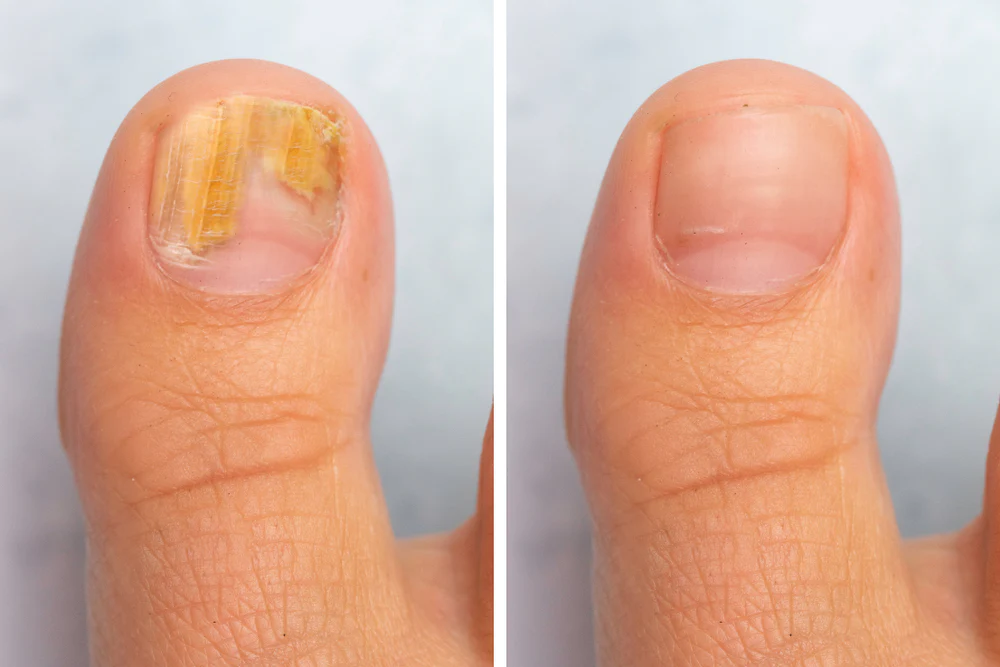Nail fungus, also known as onychomycosis, is a common condition that can affect the nails on your fingers or toes. It’s caused by a fungal Disease and can result in thickened, discolored, or brittle nails. While there are several treatments available to address nail fungus, many people wonder if nail fungus removal requires Procedure or if it can be achieved through Non-Invasive means. In this blog, we’ll explore both Treatments and Non-Invasive options for nail fungus removal and provide some tips on how to choose the best treatment for your needs.
Non-Invasive options for nail fungus removal
In most cases, nail fungus can be effectively treated without the need for Procedure. Non-Invasive treatments for nail fungus include:
Topical antifungal medications: These are creams, lotions, or nail polishes that are applied directly to the affected nail. They work by penetrating the nail and killing the fungus. This type of treatment can take several months to work and may require ongoing use.
Oral antifungal medications: These are prescription medications that are taken orally. They work by attacking the fungus from the inside out. Oral medications can take several months to work, and they can have side effects.
Laser therapy: This is a non-invasive treatment that uses a laser to kill the fungus. The laser penetrates the nail and heats it, which destroys the fungus. This type of treatment typically takes several sessions to complete and can be expensive.
Treatments options for nail fungus removal
In some cases, nail fungus can be so severe that Procedure is required to remove the affected nail. Treatments options for nail fungus removal include:
Nail removal: This involves removing the entire nail to allow a healthy new nail to grow in its place. This procedure is typically performed under local anesthesia, and the recovery time can vary depending on the individual.
Partial nail removal: This involves removing only the affected portion of the nail. This procedure is also typically performed under local anesthesia and can be effective in treating nail fungus.
Choosing the best treatment option for your needs
The best treatment option for nail fungus removal will depend on the severity of your condition, as well as your personal preferences and medical history. It’s important to consult with a dermatologist to determine the best course of action for your specific needs.
At Revitalise London Dermatology clinic, our experienced dermatologists are dedicated to helping you achieve healthy and beautiful nails. We offer a range of treatments for nail fungus, including both Treatments and Non-Invasive options.
Conclusion
Nail fungus is a common condition that can be effectively treated with both Treatments and Non-Invasive options. While Non-Invasive treatments are typically the first line of defense, Procedure may be required in severe cases. At Revitalise London Dermatology clinic, we’re here to help you choose the best treatment option for your needs and get your nails looking healthy and beautiful again.

